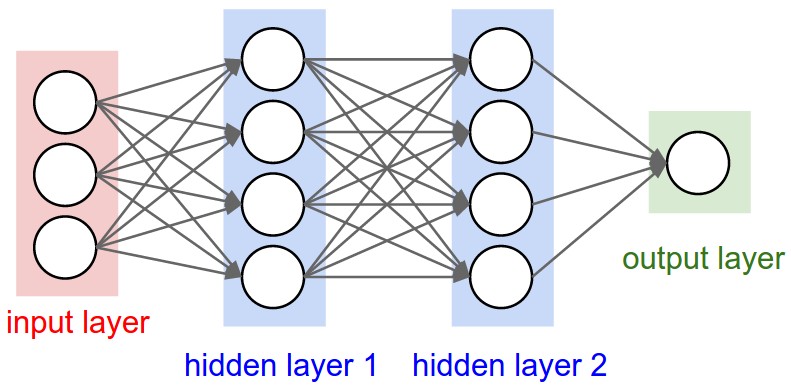Will we welcome AI into our personal lives with open arms?
If you’re reading this blog, I’m willing to bet you own a smartphone. In fact, chances are you’re probably reading this on one right now. These sleek, reflective cuboids have invaded every aspect of our human experience over the last decade. Anyone can contact anyone, from anywhere in the world; Life can be captured on camera, uploaded to the web and shared with millions in a flash; A dizzying array of apps help us to organise our lives, find love, order our groceries, track our health and pass the time whilst we wait for the bus…
We carry these connected devices with us everywhere and many would confess to feeling anxious when they are without them. Nomophobia – or the fear of being separated from your smartphone – is on the rise with 41% of Britons admitting to feeling ‘not in control’ whenever they’re severed from their handsets.
As a society we have grown increasingly more personally attached to our smartphones. This is understandable as they allow us to connect with our friends, our families, our culture and our communities. As mobile devices continue to grow more personal, it is no surprise that smartphone companies are doing their best to make operating systems (OS) more personable. By introducing artificially intelligent ‘assistants’ to the masses, companies like Apple, Google and Microsoft are betting on us all growing comfortable with the concept of openly talking to our technology.
“I’m Siri, your virtual assistant”

When Apple unveiled Siri back in 2011, it was revered as a revolutionary break-through. The Harvard Business Review announced that Siri would “fundamentally change our relationship with computers.” Naturally, it took people a while to adjust to the very concept of talking to a computer. I remember many people saying that it felt weird and that they wouldn’t use Siri in public for fear of looking strange to passers-by. Like any new technological advancement though, over time people adjusted to this new way of interacting with their devices.
However, the problem back then was that the technology wasn’t always reliable. Asking Siri “What order are the Bourne movies in?” may have resulted in the assistant inferring that you wanted to order a porn movie and suggesting the nearest adult film stores in your area (this actually happened!). If typing your query will yield more accurate search results, why would you bother asking with your voice?
Learning to listen

Apple, Google, Microsoft, Amazon and Baidu are teaching their voice recognition services to better understand speech queries by feeding voice data to their neural networks. Without getting bogged down in technical jargon, a neural network is basically a form of artificial intelligence based on the human brain and nervous system. These networks can learn and adjust how they react to inputs without being programmed to do so. Just like us humans, they adapt to different stimuli and learn over time.
The only catch to these systems is that they require a ginormous amount of data to work. To combat this, companies like Baidu are uploading terabytes of voice data to their networks. “The more data we shove in our systems the better it performs,” says Andrew Ng, Baidu’s chief scientist. “This is why speech is such a capital-intensive exercise; not a lot of organisations have this much data.” Every time you use Siri, your voice is anonymized, fed back into the neural network and used to improve the service for other users.
More and more people are using their voice to search the internet. In 2015 alone, voice search through assistants like Siri, Google Now and Microsoft’s Cortana rose from “statistical zero” (having no material impact) to 10% of overall search volume globally – that’s over 50 billion voice searches a month!
With the amount of people searching with their voice on the rise, and thus more voice data being captured by neural networks, it is sensible to predict that the quality of voice recognition is likely to improve exponentially over the coming years.
The home invasion

This year alone has seen the introduction of at least two home-based A.I assistants: Google Home and Amazon Echo. These devices claim to bring the power of voice search to your home, giving users the ability to ask questions, control the heating and play music around the home just by using their voice.
Check out this demonstration of Google Home for a feel of its capabilities:
[youtube https://www.youtube.com/watch?v=2KpLHdAURGo&w=650&h=450]
Like Siri and voice search before it, I’m sure that it will take a number of years for these devices to reach critical mass. But the fact that these huge tech companies are investing so much money and effort into getting these devices into people’s homes indicates that they’re confident that Google Home and Amazon Echo will soon be as commonplace as washing machines, fridges and toasters.
Overall, I believe that these recent and exciting developments in voice recognition software will lead to more and more of us interacting with our technology using our most natural form of communication. This will in turn not only make using our devices easier, but it will also prepare us for a future where most of our interactions with all forms of technology will be done via voice. Welcoming A.Is into our private spaces, on our persons and in our homes, is the first step towards normalising artificial intelligence in our everyday lives. In many ways, using our voice to talk to machines somewhat humanises them and this will help to wear down the barrier between what is human and what is machine.
These are genuinely enormous ideas in concerning blogging.
You have touched some nice factors here. Any way keep up wrinting.